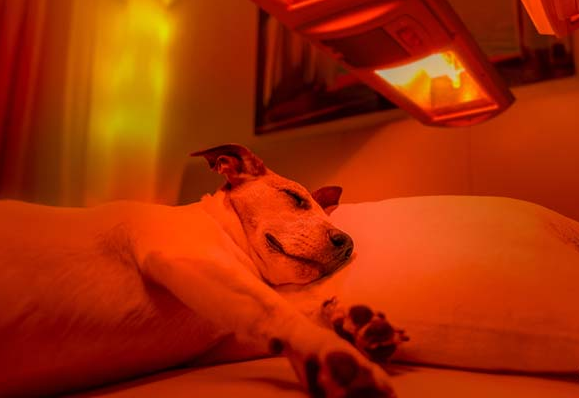It might be hard to believe to you that red light therapy has been used for many years by veterinarians all over the world to treat cats, horses, dogs, and almost any other kind of pet for various conditions.
Maybe apparently light therapy is commonly used in the treatment of most animals. Since the mid 1980s infrared and also LED red light treatment has long been used in the veterinary community for treating pets and also domestic animals. Furry or feathered, small or large, LED light therapy ended up being effectively used for a long time to treat them all.
The cells and tissues of the body soak up the light at particular red and also infrared wavelengths. LED red light is soaked up by the skin and can work well for healing infections and wounds. Infrared light penetrates into ligaments, bones, and joints.
Clinically researched wavelengths of Red LED light, infrared, and also blue spectrum are utilized separately or in mixing to generate a healthy response from the body’s resources. Some therapies stimulate the body’s defense systems while also others reactivate nutrient systems that create a revitalizing or even recovery process.
Red LED light therapies can even help to reduce discomfort by the production of nitric oxide. It is a naturally created, temporary gas that widens in arteries consequently intensifying blood flow around the areas getting treated.
The most crucial item to fully understand about Red LED light therapy is that the light should illuminate directly to the skin with nothing diffusing or blocking the light rays.
When choosing the LED light for treating the pets I highly recommend sticking into the durability of the LED light. Something that determines the durability of the LED light is the PCB material. The base material in PCB is normally fiberglass, however for specific products, aluminum PCBs are very beneficial. Aluminum PCBs are an exceptional metal core PCB with excellent thermal conductivity and insulation.
Aluminum PCBs are perfect for situations as thermal heat dissipation is highly needed. PCBs with aluminum are usually more powerful for sending thermal energy out of PCB components thus offers much better temperature control for PCB layouts. Aluminum PCB is ten times more effective when compared with fiberglass-backed PCB when considering taking away thermal energy from circuit components. The higher thermal dissipation rate enables greater power and better density layouts to be created.
Aluminum-backed PCBs will dependably maximize durability components through temperature management and reductions in malfunction rates. Aluminum PCBs also offer much better mechanical durability and low thermal amplification levels when compared with other PCB based materials.
Though they were actually created for high power switching applications, aluminum-backed PCBs have achieved worldwide recognition in LED applications, as PCB manufacturer create LED PCB for flashlights, home lighting, traffic lights, automotive lighting, as well as other lighting. The use of aluminum PCB enables the density of LEDs in the PCB to be higher to work at greater currents while staying within specific heat range tolerances.





